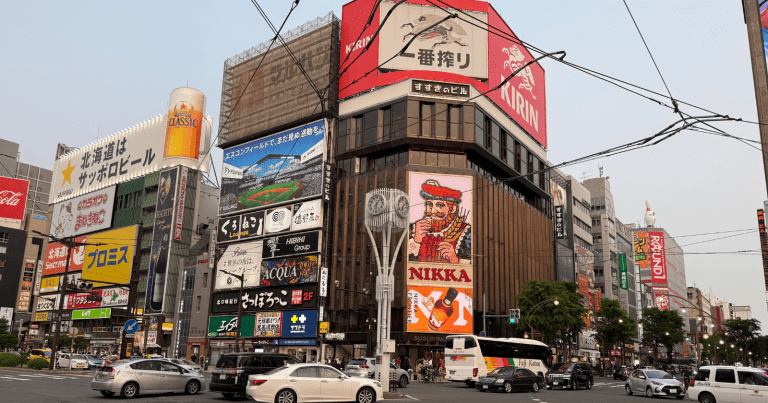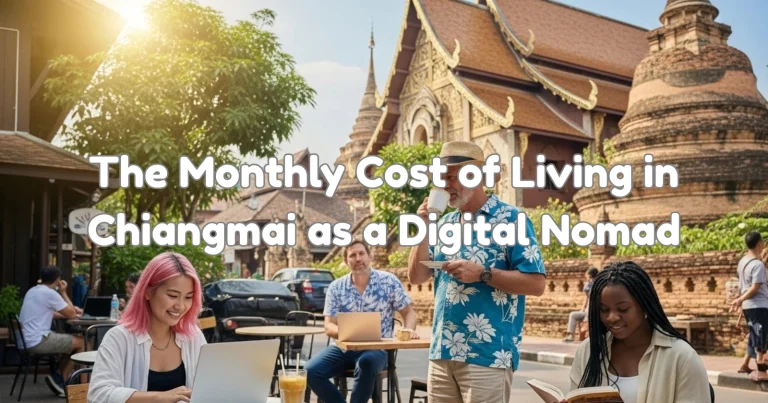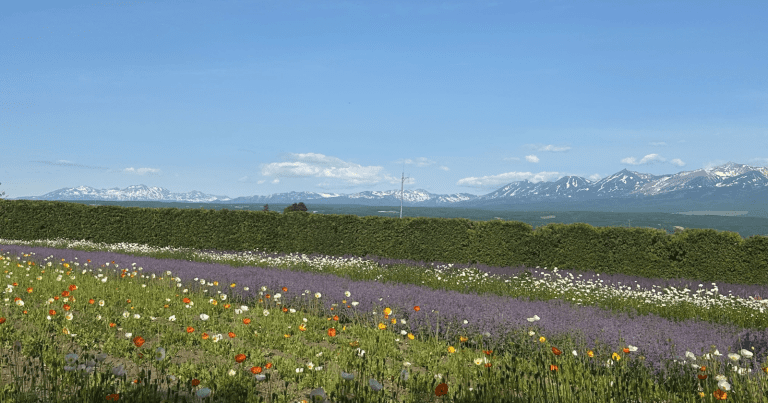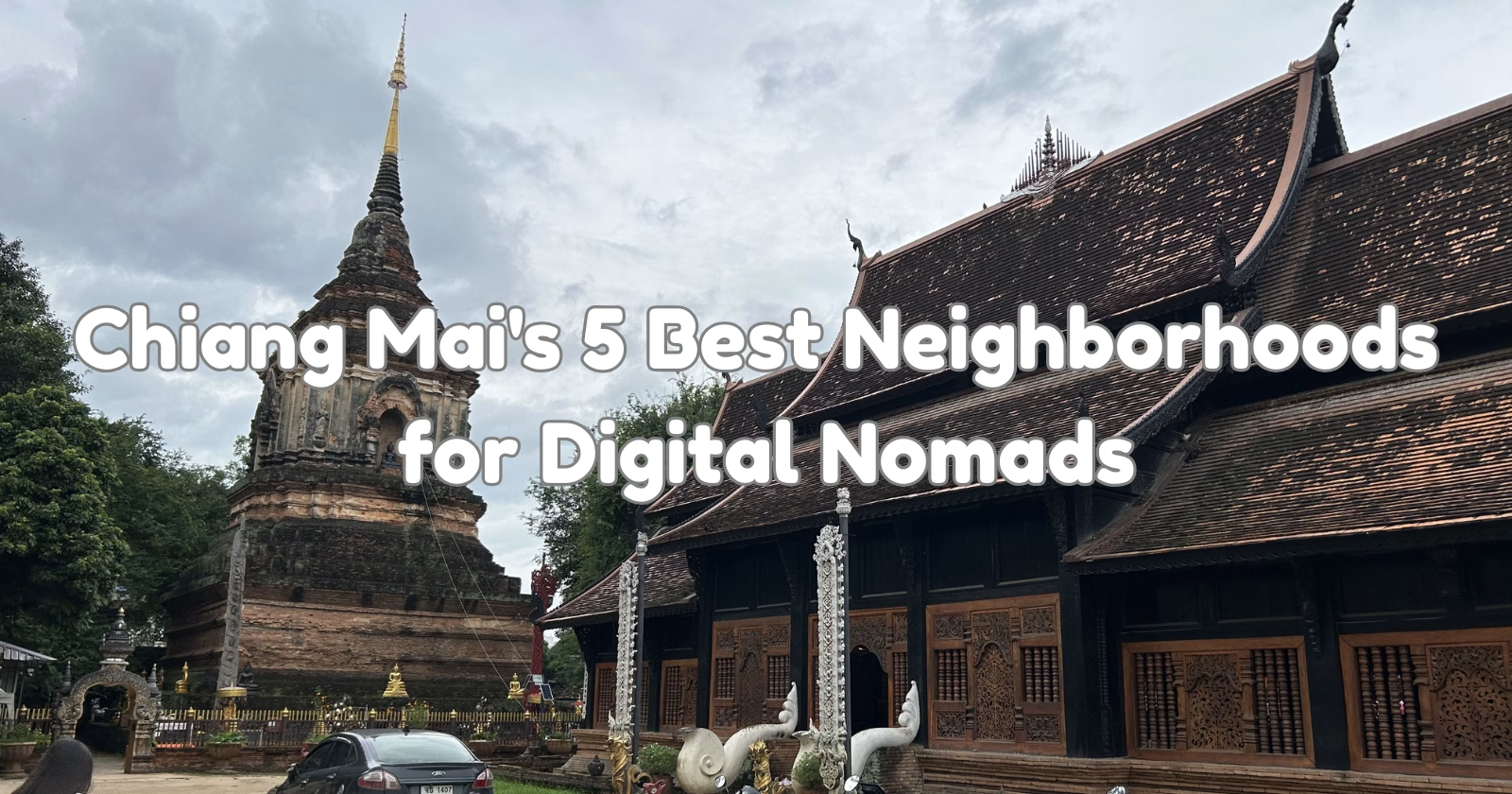
So, you’ve heard the whispers, seen the Instagram posts, and now you’re considering the leap: becoming a digital nomad in Chiang Mai. It’s an alluring prospect, but once the initial excitement settles, a critical question arises: where exactly will you set up your base? Choosing the right neighborhood in Chiang Mai isn’t just about finding a roof over your head; it’s about defining your daily routine, your social life, and ultimately, your success and happiness as a remote worker in this vibrant Thai city. The sheer number of options, from bustling city centers to tranquil riverside havens, can be overwhelming. How do you find a place that aligns with your budget, work style, and desire for community?
Eventually settled right here in Chiang Mai, I know this dilemma well. The goal of this article is to cut through the noise and provide a highly practical, actionable, and realistic resource for current or aspiring digital nomads and long-term travelers.
Before we dive into the specifics of each neighborhood, it’s worth reiterating why Chiang Mai consistently ranks high on lists for digital nomads. Beyond its inherent charm and rich Lanna culture, it offers a compelling combination of low cost of living, a robust existing nomad community, abundant coworking spaces and cafes, and a generally relaxed pace of life. This creates an environment conducive to both productivity and exploration. However, like any city, different areas cater to different preferences, and what makes one neighborhood perfect for a party-loving freelancer might make another ideal for a focused programmer seeking tranquility. Your choice of neighborhood will significantly shape your experience.
The 5 Best Neighborhoods for Digital Nomads in Chiang Mai
Let’s explore the top contenders, detailing what each offers and what you should consider before committing.
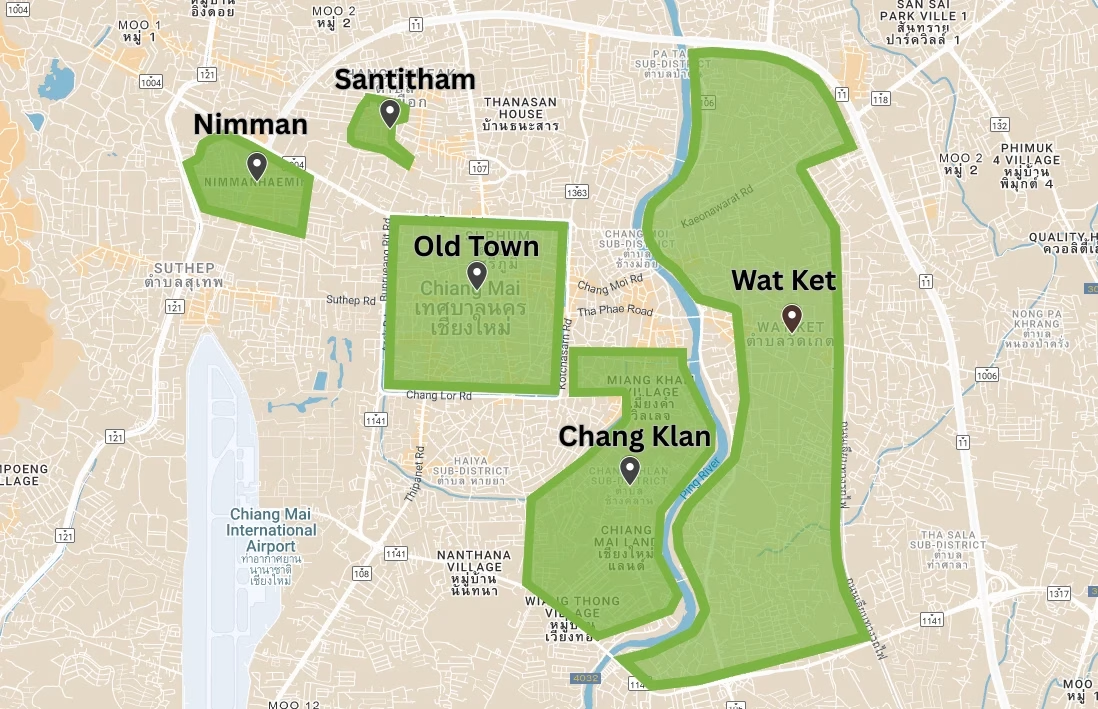
1. Nimman (Nimmanhaemin Road Area): The Modern Hub
Nimman, or Nimmanhaemin as it’s formally known, is undeniably Chiang Mai’s most recognizable digital nomad hotspot. Located just west of the Old City, it’s a modern, upscale area teeming with trendy cafes, boutique shops, art galleries, and an abundance of coworking spaces.
If your ideal lifestyle involves walking to a different specialty coffee shop every day, networking with fellow entrepreneurs, and having access to international dining options, Nimman is your go-to. It feels more cosmopolitan than other parts of Chiang Mai, often referred to as the “Beverly Hills” of the North.
Pros:
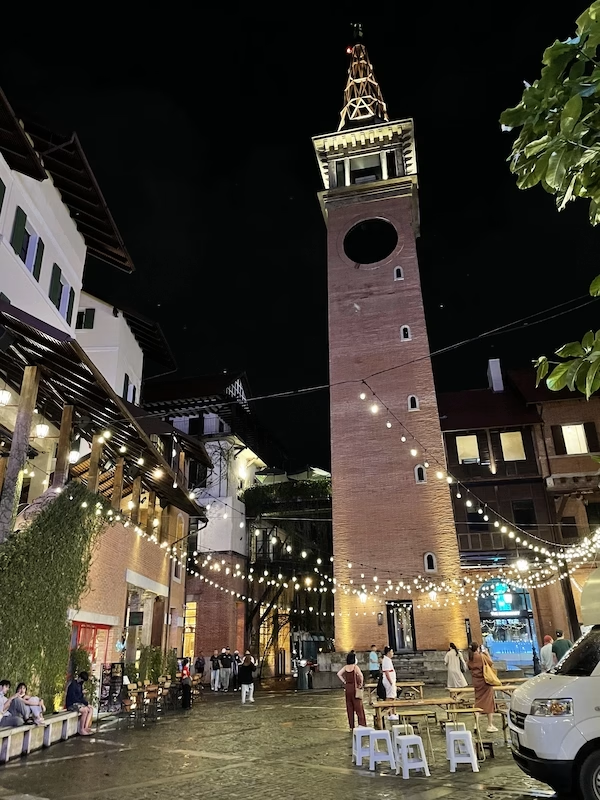
- Connectivity & Coworking: Nimman boasts the highest concentration of high-speed internet cafes and dedicated coworking spaces like Camp at Maya Mall or The Brick. It’s a true hub for collaboration and productivity.
- Amenities: Everything you could possibly need is within walking distance – modern malls (Maya and One Nimman), gyms, health clinics, and a diverse range of international restaurants alongside local eateries.
- Community: This is where the majority of Chiang Mai’s digital nomad community congregates. Finding meetups, workshops, and social events is incredibly easy, fostering a strong sense of belonging.
Cons:
- Cost: Nimman is the most expensive neighborhood in Chiang Mai. Monthly condo rentals typically range from 10,000 to 25,000 THB for a studio or one-bedroom unit, depending on the building’s age and amenities. This is significantly higher than other areas.
- Noise & Crowds: Its popularity comes with a downside. Traffic can be heavy, especially during peak hours, and the streets are often bustling well into the night, making it less ideal for those seeking quiet solitude.
- Authenticity: While convenient, Nimman can sometimes feel less “Thai” and more like an international bubble, which might not be what you’re looking for if cultural immersion is a top priority.
2. Santitham: The Balanced Blend
Nestled just north of Nimman and west of the Old City, Santitham offers a fantastic compromise for those who want proximity to Nimman’s amenities without its accompanying price tag and constant buzz. It’s a residential area that has seen a gradual influx of cafes, guesthouses, and local businesses, making it a comfortable blend of local Thai life and expat convenience.
Pros:
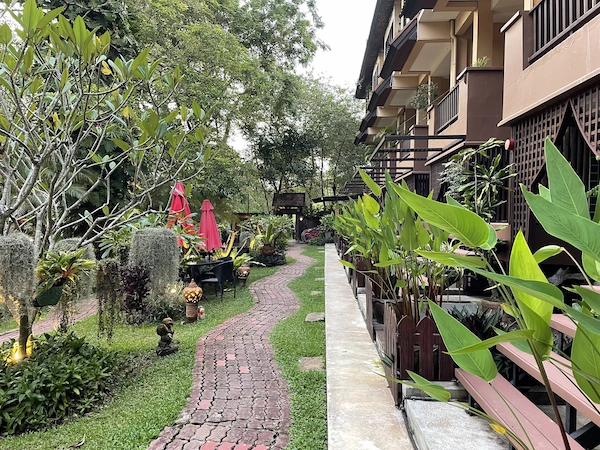
- Affordability: Rentals in Santitham are noticeably cheaper than Nimman, typically ranging from 8,000 to 18,000 THB per month for a well-maintained condo. This makes your monthly costs in 2025 more manageable.
- Local Vibe with Access: You’ll find more authentic local restaurants, street food stalls, and markets here, offering a glimpse into everyday Thai life. Yet, Nimman is just a 5-10 minute scooter ride away, granting easy access to its modern conveniences.
- Quieter than Nimman: While still a city area, Santitham generally offers a more tranquil environment, especially on its side streets.
Cons:
- Less Direct Access to Coworking: While cafes abound, dedicated coworking spaces are fewer directly within Santitham, often requiring a short commute to Nimman or other areas.
- Limited Nightlife: If you’re looking for vibrant nightlife, you’ll need to venture out to Nimman or the Old City. Santitham is more about quiet evenings.
3. Old City (Tha Pae Gate / Old City Square): The Historic Heartbeat
The Old City, encircled by a moat and ancient walls, is Chiang Mai’s historical and cultural epicenter. Living within the “square” means you’re surrounded by ancient temples, traditional markets, and a constant hum of cultural activity. This area is perfect for those who prioritize immersion in Thai culture, enjoy walking, and appreciate being at the heart of the city’s heritage.
Pros:
- Cultural Immersion: Temples on every corner, vibrant street markets (including the famous Sunday Walking Street), and traditional Thai architecture define this area. It’s an authentic experience right outside your door.
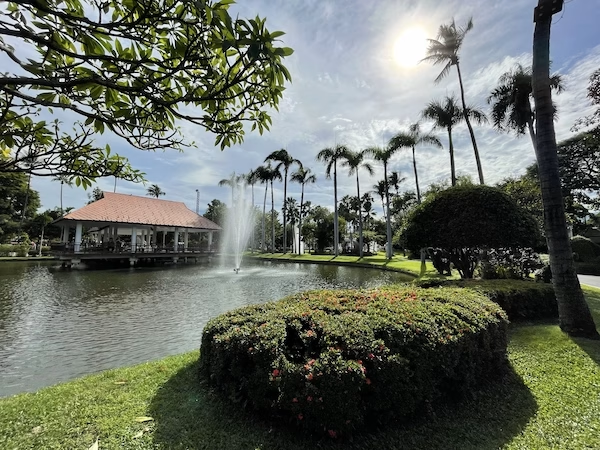
A small lake inside a park in Old City Square - Walkability: Many attractions, restaurants, and massage shops are easily accessible on foot, reducing the need for transportation.
- Affordable Food: The Old City is famous for its abundant and incredibly affordable street food options.
Cons:
- Tourist Central: As the main tourist attraction, the Old City can get incredibly crowded and noisy, especially during festival seasons or market nights. Traffic within the moat can also be a challenge.
- Limited Modern Amenities: While there are cafes, true coworking spaces are less common inside the moat compared to Nimman. Condos can also be older, and some may lack modern amenities.
- Traffic & Parking: Navigating the narrow streets, especially during peak hours, can be a headache. Parking is also a significant challenge if you have a vehicle.
- Rental Costs: Expect to pay anywhere from 7,000 to 15,000 THB for an older apartment or guesthouse room. Modern condos are scarce and can be pricier.
4. Chang Klan: The River’s Edge & Night Bazaar Buzz (My Home)
The Chang Klan area, particularly around the famous Night Bazaar, offers a distinct flavor of Chiang Mai. Located east of the Old City and stretching towards the Ping River, it’s a bustling commercial zone that transforms into a lively night market district after sunset. As someone who calls Chang Klan home, I can tell you it’s a fascinating blend of local life, tourism, and unexpected pockets of tranquility.
Pros:
- Vibrant Atmosphere: The Night Bazaar offers endless entertainment, shopping, and diverse food options nightly. It’s never dull.
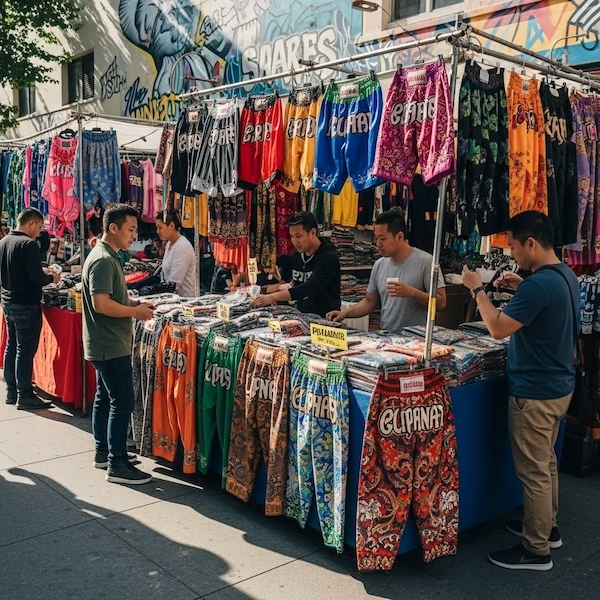
Thai vendor selling muay thai and elephant shorts in Chiang Mai - Accessibility: Good connectivity to the Old City and even Nimman (a 10-15 minute ride). It’s also closer to the train station and airport.
- Affordable Living: While touristy spots exist, you can find surprisingly affordable condos and apartments ranging from 7,000 to 15,000 THB, especially a few streets away from the main bazaar strip. You’ll also find a good mix of local markets and more upscale restaurants.
- Riverside Charm: Proximity to the Ping River means charming riverside cafes and restaurants, offering a more serene escape from the bazaar’s energy.
Cons:
- Traffic Congestion: The main Chang Klan Road can get very congested, particularly in the evenings when the Night Bazaar is in full swing.
- Noise: Depending on your exact location, the nightly buzz of the bazaar can be a significant source of noise, especially for those sensitive to sound.
- Flooding Risk: Certain low-lying areas closer to the Ping River can be prone to localized flooding during particularly heavy monsoon rains. While typically receding quickly, it’s something to be aware of if you choose a ground-floor unit or an area right on the river.
5. Wat Ket: The Bohemian Riverside Escape
Across the Ping River from the Old City and Chang Klan lies the charming and often overlooked neighborhood of Wat Ket. This area exudes a bohemian, village-like atmosphere with its narrow lanes, traditional wooden houses, art galleries, and quaint riverside cafes. It’s a stark contrast to Nimman’s modernity or the Old City’s tourist bustle, appealing to those seeking a quieter, more local, and artistic environment.
Pros:
- Quiet & Local: Wat Ket offers a genuine sense of local community. The pace is slower, and you’ll find yourself amidst more Thai residents and long-term expats than short-term tourists.
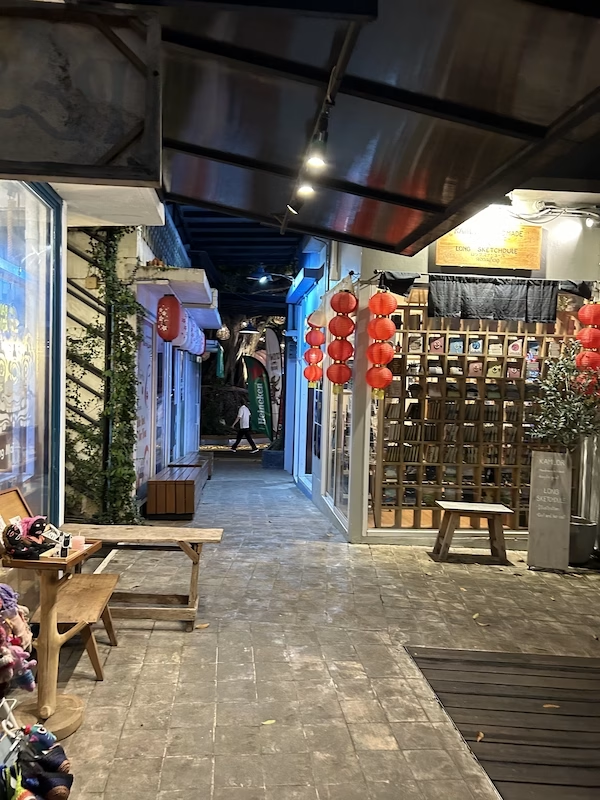
Artsy little corner in Chiang Mai - Artistic & Charming: Abundant art spaces, unique cafes, and boutique guesthouses create a distinctly charming and creative ambiance. The riverside promenade is beautiful for strolls.
- Value for Money: Rentals here offer excellent value, with older houses or condos typically costing between 6,000 and 12,000 THB per month, often with more space than you’d find closer to the city center.
Cons:
- Less Western Amenities: While you’ll find local shops and eateries, Western supermarkets or large international chains are scarce.
- Reliance on Transport: While charming, getting to the Old City, Nimman, or major shopping centers requires crossing the river, which often means having your own renting a scooter or relying on Grab/songthaews. This can feel isolating for those who prefer to walk everywhere.
- Limited Coworking: Dedicated coworking spaces are virtually non-existent here, though some cafes offer good working environments.
Addressing Realities and Challenges in Chiang Mai
While Chiang Mai offers an incredible lifestyle for digital nomads, it’s crucial to approach it with a realistic mindset. The dream often encounters practical hurdles. One common challenge, irrespective of your chosen neighborhood, is managing the local bureaucracy for long-term stays. Thailand’s visa situation requires careful planning, and while many start with tourist visas and extend or do visa runs, understanding the long-term options, like the Thai long-term visa programs for specific categories, is essential. Patience is a virtue when dealing with immigration.
Inconsistent infrastructure, particularly concerning power outages, can occasionally disrupt work. While generally reliable, brief blackouts are not unheard of, especially during the rainy season. Always have a backup plan, whether it’s a fully charged laptop and power bank or a nearby cafe with a generator. Another aspect is the “burning season” (roughly February to April), where agricultural burning can significantly impact air quality. Many nomads choose to leave during this period, which is a practical solution, though others stay and rely on air purifiers and masks.
Maintaining a work-life balance can also be surprisingly difficult. With so many social events and travel opportunities, it’s easy to get swept up. Setting clear boundaries for work hours, even within the casual nomad lifestyle, is vital. Loneliness, too, despite the large community, can creep in. Actively participating in meetups, joining sports clubs, or pursuing hobbies are practical ways to build meaningful connections. Safety, while generally good, requires common sense – being aware of your surroundings, especially at night, and securing your belongings are standard precautions, just like anywhere else.
“The journey of a thousand miles begins with a single step.”
– Lao Tzu
Beyond the Neighborhood: What Else Matters
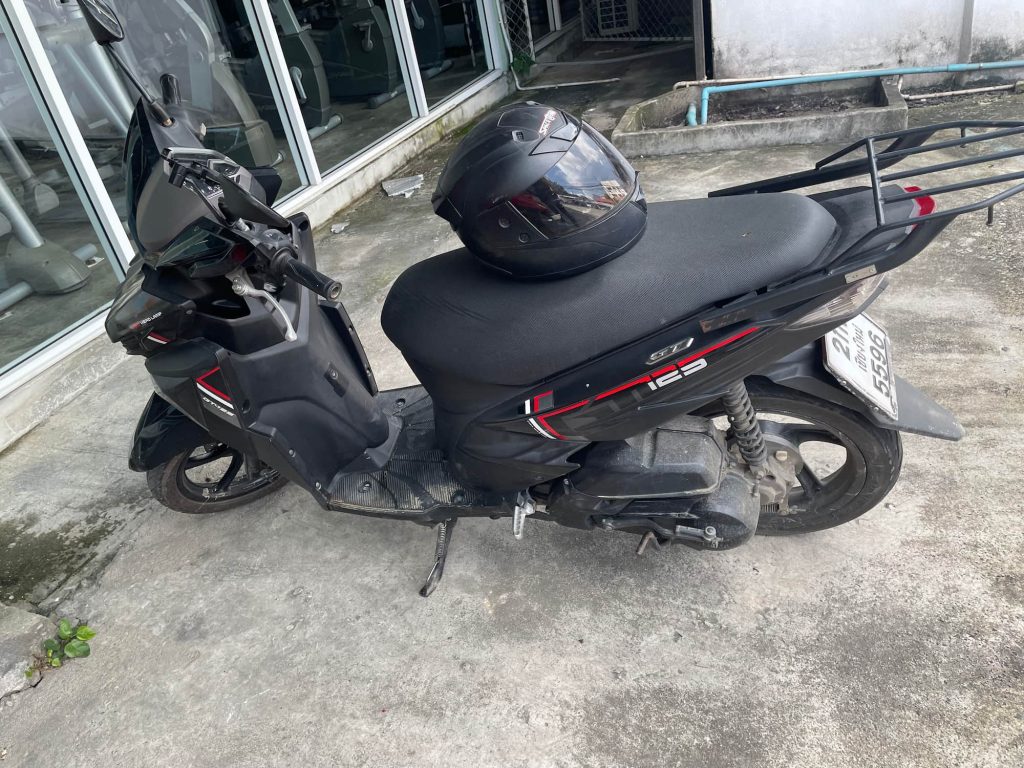
Regardless of which of best Asian cities for digital nomads you choose, successful long-term living in Chiang Mai hinges on a few other key practicalities. Firstly, internet stability is paramount. While most cafes and condos offer Wi-Fi, having a strong mobile data plan from a local provider like AIS or TrueMove is crucial for backup and on-the-go work. Secondly, transport: while Grab (ride-hailing app) is widely used, many nomads opt for scooter rental for independence. Just ensure you have the appropriate international driving permit and insurance. Finally, consider healthcare.
While Chiang Mai has excellent international hospitals, travel insurance that covers medical emergencies is non-negotiable. Don’t forget to explore the incredible local culinary scene; you’ll find an amazing array of street food flavors that make Chiang Mai a true food paradise.
Conclusion: Finding Your Chiang Mai Fit
Choosing your home base in Chiang Mai as a digital nomad is a highly personal decision, deeply intertwined with your work style, budget, and desired lifestyle. Nimman offers modern convenience and a thriving expat community at a higher cost. Santitham provides a balanced, slightly more affordable alternative with good local flavor and proximity to amenities. The Old City is steeped in history and culture, perfect for walkable, immersive experiences but with more tourist crowds. Chang Klan, my own choice, gives you the buzz of the Night Bazaar and riverside charm, balancing local life with accessibility. And Wat Ket provides a quiet, artistic escape across the river for those seeking deeper local immersion and great value, albeit with less direct access to Western conveniences.
The beauty of Chiang Mai is its diversity, allowing you to find a niche that truly fits. Our exploration has aimed to be a highly practical guide, offering you the detailed breakdown necessary to make an informed choice. Remember, circumstances and costs can shift, so always verify the latest information from reliable sources. Before making a final decision, consider spending a week or two in an Airbnb in your top two choices to get a real feel for daily life in each area. For ongoing updates on visa regulations, always consult the official website of the Ministry of Foreign Affairs of Thailand. Join city-specific expat Facebook groups like “Chiang Mai Digital Nomads” for real-time advice and community insights.
Chiang Mai truly has the potential to be your perfect digital nomad home, a place where you can be productive, connect with others, and immerse yourself in the magic of Northern Thailand, whether you’re living in its vibrant core or a serene riverside retreat. It is, in many ways, an underrated digital nomad city that continues to surprise and delight.


